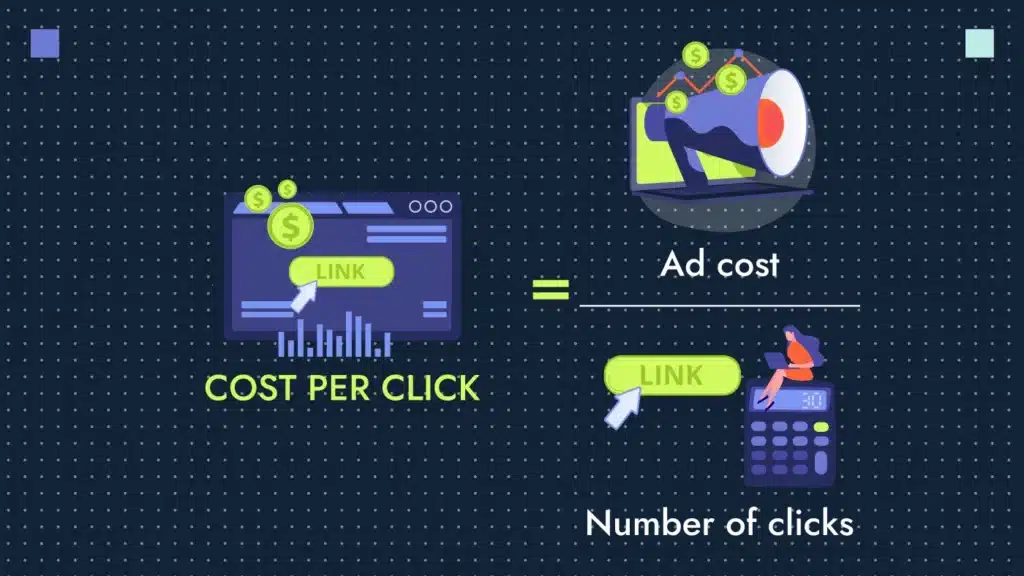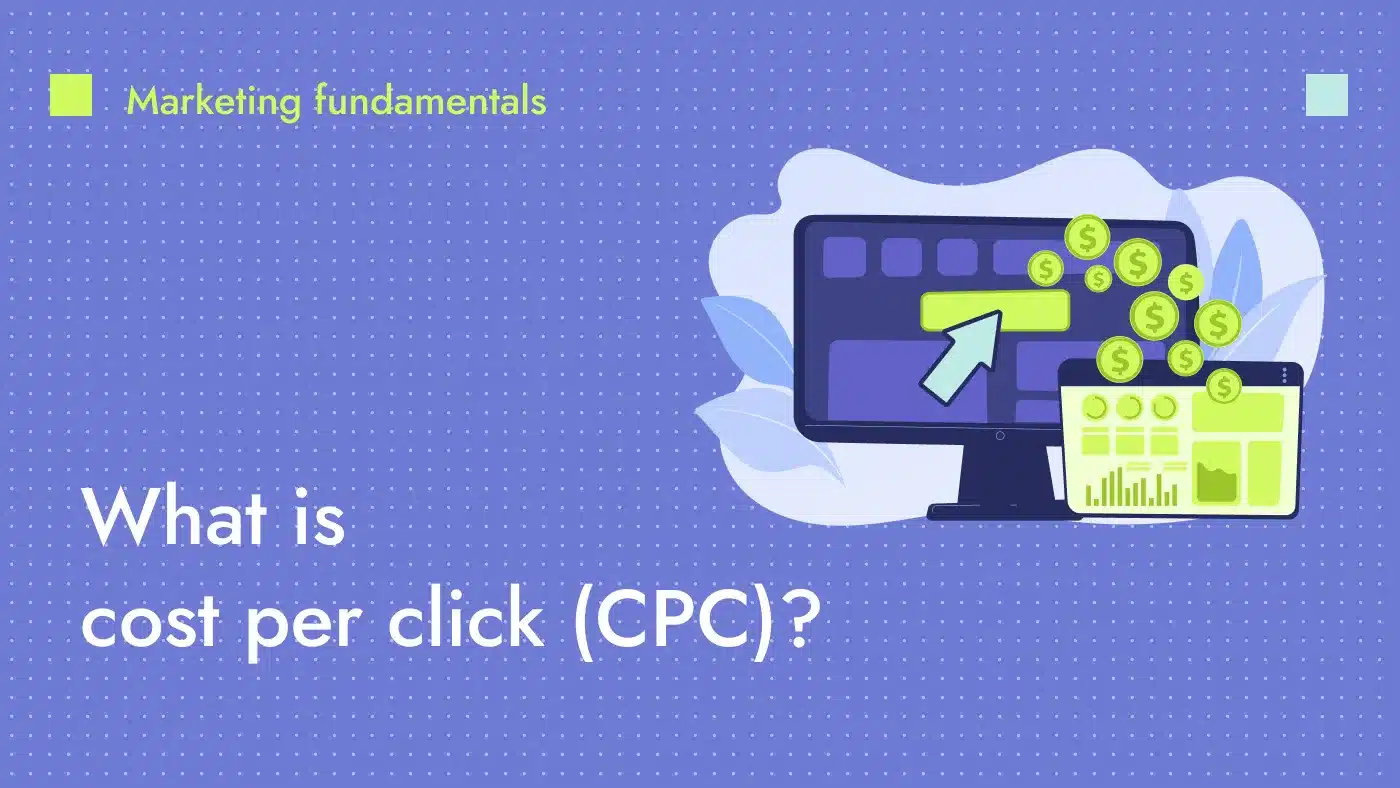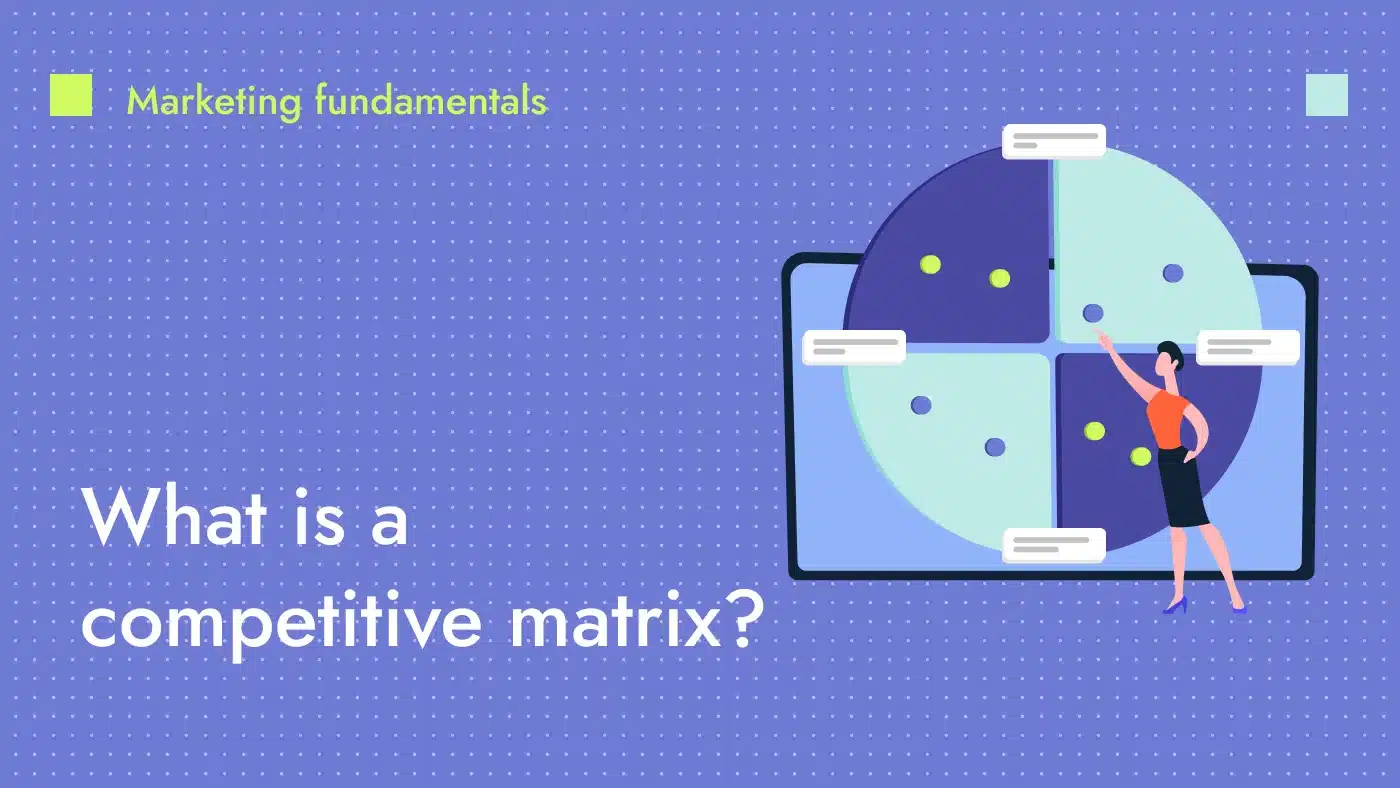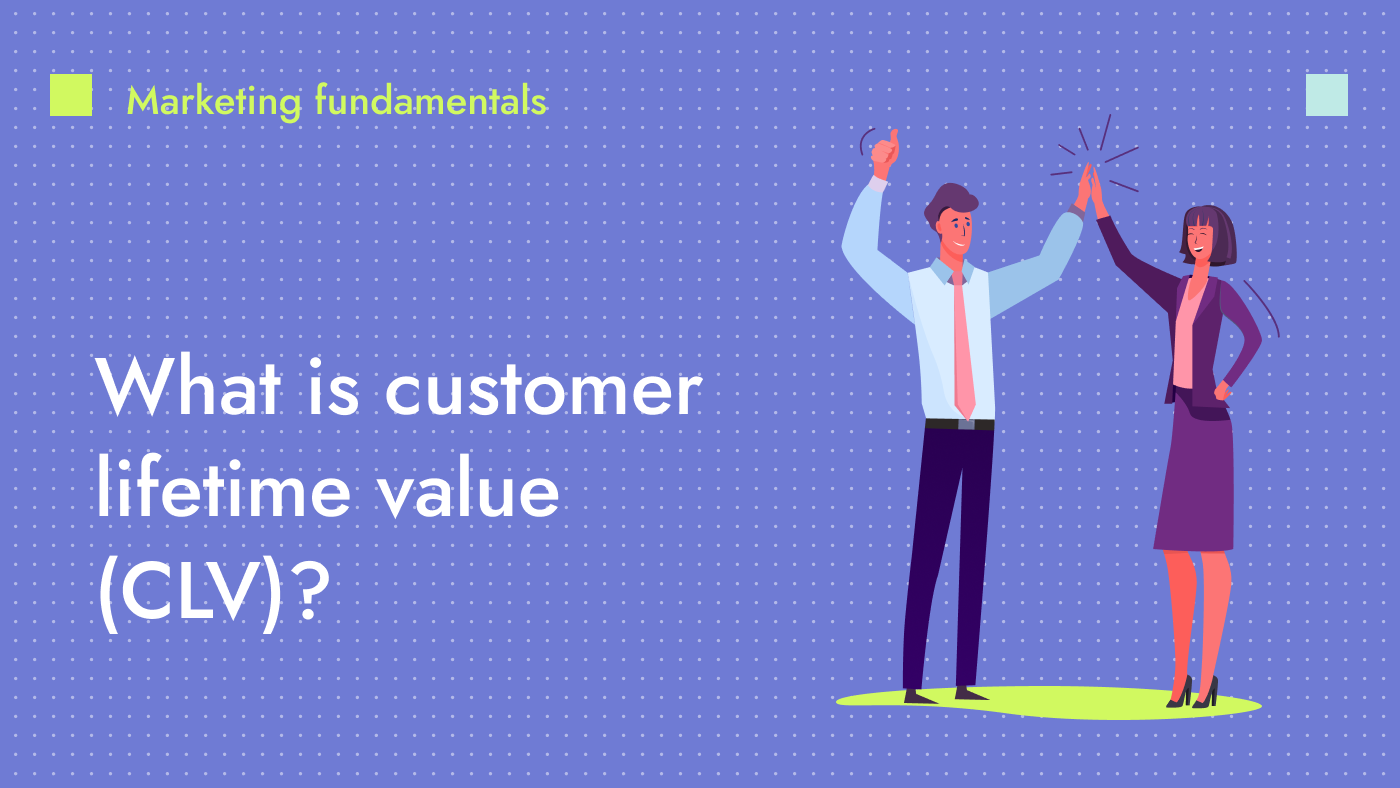Cost per click (CPC) is a pricing model used by advertisers to measure the cost of each click generated by their online ads. It is a performance based metric used in the widely popular pay per click (PPC) ad campaigns. According to WordStream, sponsored ads account for almost 65% of clicks on transactional SERPs.
The CPC metric helps advertisers understand how efficiently their advertising budget is being used. Higher CPC values indicate that it’s more expensive to acquire a click, while lower CPC values suggest more cost-effective advertising.
CPC vs PPC: What is the difference?
CPC and PPC are related concepts in online advertising. CPC is an integral part of the pay per click model, used to determine how much an advertiser pays for each click in a PPC campaign.
Cost per click
CPC is a measure of how much advertisers pay every time a user clicks on your ad. The cost per click varies depending on the ad platform, the specific keyword or ad group and the competition for that keyword. CPC is a way to quantify the cost of acquiring web traffic through advertising.
Pay per click
PPC is a broader marketing strategy that encompasses the entire process of creating and running an advertising campaign based on paying for clicks. Advertisers bid on keywords or ad placements, and they are charged for each click their ad receives.
In practical terms, advertisers often focus on optimizing CPC to ensure they get the best value for their paid advertising budget within the PPC framework.
How to calculate cost per click
Now that we know how marketers define cost per click, let’s understand the cost per click formula:
CPC = Total advertising cost / Total number of clicks

For example, if you spent $500 on your advertising campaign and received 1,000 clicks from your target audience, the CPC calculation would be:
$500 / 1,000 clicks = $0.50 per click
So, the average cost per click will be $0.50 for each user who clicks on your ad during the campaign.
To find the CPC for a specific keyword using different keyword research tools, follow these general steps for each tool:
Google Ads
- Log in to your Google Ads account.
- Click on “Tools & Settings” in the top menu.
- Under the “Planning” section, select “Keyword Planner.”
- Choose the “Discover new keywords” option.
- Enter the keyword you want to research.
- Click “Get Results.”
- You’ll see estimated CPC values for the keyword in the search results.
Semrush
- Log in to your Semrush account or sign up for a trial if you don’t have an account.
- In the Semrush dashboard, go to the “Keyword Overview” section.
- Enter the keyword you want to research in the search bar.
- Review the results to see CPC data for the keyword, listed along with other keyword metrics.
Ahrefs
- Log in to your Ahrefs account or sign up for an account if you don’t have one.
- In the Ahrefs dashboard, go to the “Keyword Explorer” tool.
- Enter the keyword you want to research.
- In the keyword results, you’ll find CPC data among other keyword metrics.
Moz
- Log in to your Moz account or sign up for a Moz Pro account.
- Access the “Keyword Explorer” tool within the Moz dashboard.
- Type the keyword you want to find the CPC metrics for.
- In the results section, you’ll find CPC data listed among other keyword metrics.
How CPC benefits marketing teams
The digital advertising market is forecast to surpass $730 billion in 2025, per Oberlo. To gain the most out of this trend and maximize your marketing ROI, you should leverage the CPC metric.
Let’s look at the top benefits of tracking cost per click:
- Evaluating ad performance: The CPC metric is a key performance indicator (KPI) for marketing teams to measure the cost-effectiveness of ad campaigns — how much they pay for each click generated by a specific advertisement. Using this data, marketers decide which digital ad campaigns require more budget and resources.
- Controlling cost: By knowing the cost associated with each click, advertisers set budgets that align with their financial objectives. This cost control is essential for preventing overspending. It also allows advertisers to identify inefficient cost per click campaigns or keywords that are driving up costs and take corrective actions to optimize their spending.
- Optimizing keyword research for SEO: When you run CPC campaigns, you perform keyword research to identify high-performing keywords for your ads. This research also helps you discover valuable keywords for your organic SEO strategy. Understanding which keywords are driving traffic and conversions through paid ads can improve your SEO-driven content calendar efforts.
What is a good CPC rate?
There is no one-size-fits-all answer when it comes to a “good” cost per click (CPC) rate. A good cost per click should be one that allows you to achieve your specific advertising goals while maintaining a positive ROI. It’s often a balance between cost and the value you receive from each click.
Best practices for cost per click campaigns
Here are three best practices to lower your average CPC and make the most of your campaigns.
1. Improve your landing page to boost conversions
A well-optimized landing page enhances the user experience, improves conversion rate and potentially lowers your CPC. Here’s how to do it:
- Ensure that the content on your landing page is closely related to the ad and the keywords you’re targeting.
- Optimize your landing page for improved speed to load, especially on mobile devices, as slow-loading pages lead to higher bounce rates.
- Have a clear and compelling CTA that guides users to take the desired action, such as making a purchase or filling out a form.
- Make sure your B2B landing page is mobile-responsive for a seamless experience.
- Use comparison pages to target keywords related to competitor names or products. When users search for these terms, your comparison page can appear as an option.
2. Leverage keyword research to make ads more relevant
Relevant ads lower CPC and increase the likelihood of users taking the desired action, leading to a more efficient use of your advertising budget. To make your ads more relevant:
- Use keyword match types (e.g., exact match, phrase match, broad match modifier) effectively to ensure your ads appear for relevant search queries.
- Organize your keywords into tightly-themed ad groups. This keyword clustering allows you to create highly relevant ad copy for each group.
- Regularly review and update your list of negative keywords to prevent your ads from showing for irrelevant search queries.
💡Discover how keyword harvesting helps improve search engine rankings.
3. Improve quality score
Advertising platforms like Google Ads use quality score as a metric to assess the quality and relevance of your ads. When your ads have a high score, they are more likely to appear in top ad positions improving the possibility of more clicks. Here’s how to improve the quality score of your ads:
- Create ads that directly relate to the chosen keywords. Avoid sloppy writing and make sure your ad copy reflects what users are searching for.
- Improve your expected click through rates (CTR) by regularly testing different ad variations to see which ones perform best.
- Use ad extensions such as site links, callouts and structured snippets to provide additional information and incentives that make your ads more appealing.
Tools to optimize cost per click marketing campaigns
Let’s look at the prominent tools to make the most out of your CPC advertising campaign:
| Tool categories | What they do | Tool examples |
|---|---|---|
| Keyword research | Identify relevant keywords and analyze search volume, competition and trend data to optimize ad targeting with lower CPC | Google Keyword Planner, Semrush, AHREFS |
| Bid management | Employ advanced algorithms to help optimize bids by adjusting amounts based on factors such as keyword performance, time of day and audience behavior | Google Ads, Bing Ads, Marin Software, Kenshoo |
| Ad copy testing and optimization | Perform A/B testing to create, test and refine ad copy variations to improve click-through rates and relevance | Optimizely, Google Optimize |
| Quality score optimization | Focus on improving ad quality factors, including ad relevance, landing page experience and expected click-through rate | Google Ads Quality Score |
| Ad scheduling and geographic targeting | Customize when and where your ads are displayed to optimize ad delivery during high-converting times and in geographic locations with a greater potential for conversions | Google Ads, Facebook Ad Manager, LinkedIn Ads |
| Retargeting via audience pools | Re-engage specific user segments who previously interacted with your website or content but didn’t complete a desired action, such as completing a purchase or filling out a contact form. | AdRoll, Criteo, Taboola, Oubrain |
| Conversion tracking and analytics tools | Measure the impact of advertising campaigns on website conversions, track user behavior and gain insights into which keywords lead to conversions. | Google Analytics |
| Competitive analysis | Analyze competitors' ad strategies, keyword targeting and budget allocation to identify opportunities for CPC improvement and outperforming competitors in your niche | SpyFu, Semrush |
| Ad budget management | Automate budget allocation and optimization to ensure that you're efficiently allocating your budget across campaigns and optimizing for lower CPC while maximizing ROI | Optmyzr, WordStream Advisor |
Propel your cost per click planning with Productive Shop
If you are struggling to scale your CPC marketing efforts, work with a team that has a proven record of helping tech startups grow their businesses. At Productive Shop, we help you navigate CPC advertising by optimizing keyword research, writing B2B copy that converts and designing impactful websites.






